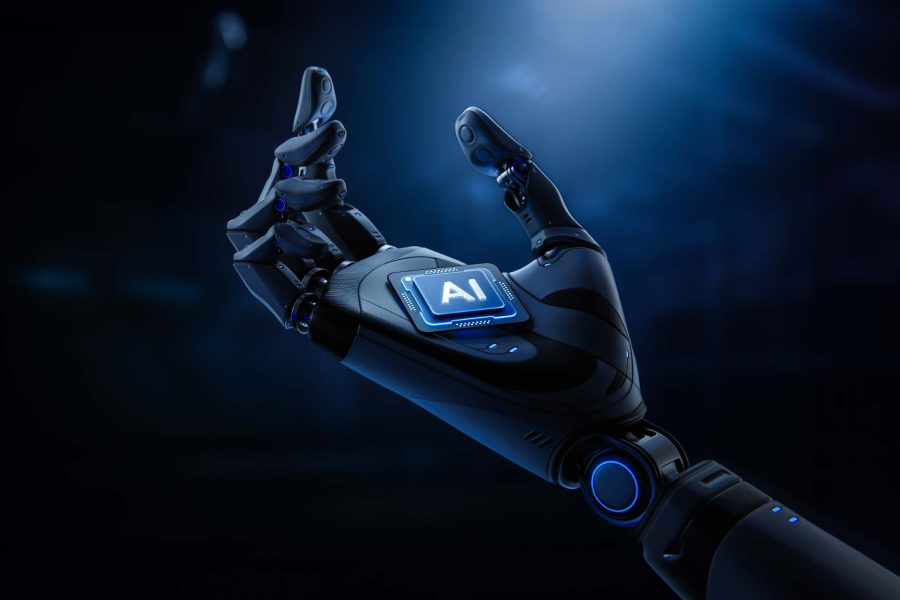HEAD: Human Experience for AI-Led Design
Why Artificial Experience Will Redefine Business Leadership in the Age of Intelligence

By Soranun Choochut, CXO at Bluebik Group
Today, AI has become table stakes. The true differentiator is no longer system speed or algorithmic intelligence, but how effectively AI creates meaningful connections with people on a human level.
That’s the essence of HEAD: Human Experience for AI-Led Design — designing AI that aligns with human nature, builds trust, and delivers lasting business value.
I. A Conversation That Changed How I See AI
Not long ago, I sat with the CEO of a leading consumer bank. The company had just spent millions upgrading its AI stack. Predictive analytics, chatbot layers, even some machine-generated marketing content. The boxes were checked. The dashboards were glowing.
But the CEO’s tone wasn’t pride — it was frustration. “We’ve invested heavily,” he said, “but the experience still feels… dumb. Our customers don’t feel understood. Our systems don’t feel intelligent. Where’s the magic?”
That question hit me. Not because it was rare — but because it was universal. Across industries — finance, healthcare, energy, telecom, government — I’ve heard the same. We’ve built smart machines. But the experiences around them still feel mechanical. We haven’t yet crossed the line from intelligent processing to intelligent presence.
That’s when I realized: AI is not the revolution. HEAD: Human Experience for AI-Led Design — is.
II. What Is Artificial Experience? HEAD is not a new product category.
It’s a new design philosophy. A reorientation of how we think about intelligence, technology, and trust. Artificial Experience is what happens when we stop designing around the system — and start designing around the human’s evolving relationship with that system.
Where UX was about making things usable, and CX was about making them delightful, HEAD is about making them emotionally resonant, deeply adaptive, and self-evolving. It brings together five foundational shifts:
1. From Interface to Agency HEAD systems don’t wait to be clicked. They act. They sense need, context, and emotion — and initiate helpful, timely, relevant experiences.
2. From Behavior Tracking to Relationship Building Today’s systems remember what you did. HEAD systems remember who you are becoming. They adapt to your goals, your journey, even your emotional cycles.
3. From Personalization to Emotional Intelligence True personalization isn’t just using your name or past orders. It’s adjusting tone, pacing, and narrative based on how you feel. It’s empathetic by design.
4. From Automating Tasks to Augmenting Decisions HEAD systems aren’t just task runners. They’re co-pilots — helping humans think better, choose better, lead better.
5. From Static Services to Living Ecosystems HEAD doesn’t start and stop. It evolves. Like a trusted advisor who grows with you, it learns, refines, and earns trust over time.
III. Why This Matters at the Board Level
If you’re sitting on a board or leading an enterprise, your job isn’t just to approve technology spend. It’s to understand how technology shapes trust, creates meaning, and drives differentiation in a post-digital world. Let’s take a closer look at what’s really at stake:

1. HEAD as a Trust Multiplier In a world flooded with AI-generated everything, customers are no longer asking “Is this efficient?” They’re asking, “Does this know me? Can I trust this?” Trust isn’t built through faster servers or smarter predictions.
It’s built through experiences that feel human in their rhythm and intuition. Companies that design HEAD — experiences that sense hesitation, respond with care, and guide without pushing — will become the brands people feel loyal to in an algorithmic world.
2. HEAD Is Where Efficiency Meets Intuition We often measure enterprise efficiency in throughput, automation, and margin. But the most valuable breakthroughs come when we introduce intuitive decision layers.
• An HEAD -empowered analyst dashboard doesn’t just show trends. It tells a story.
• An HEAD -powered customer service system doesn’t just triage tickets. It heals frustration.
• A knowledge platform doesn’t just surface articles. It mentors new employees. Imagine systems that don’t just work — they understand your intent and act with the nuance of a senior partner. That’s not AI. That’s HEAD.
3. It’s the Next Competitive Differentiator When every company has similar algorithms and infrastructure, what separates the good from the great? The experience layer. HEAD is how a retail bank becomes a lifestyle coach. It’s how a healthcare provider becomes a wellness partner. It’s how a telco becomes a daily advisor, not a utility provider. The business case is real: HEAD increases stickiness, satisfaction, and spend. But more than that, it positions your brand as evolved, human, and trustworthy — in a time when those things are rare.
IV. HEAD in the Real World: The Emerging Signals While still early, HEAD is already emerging in powerful use cases:
• Character.AI and Pi.ai are reshaping how people engage emotionally with AI, spending hours with intelligent personas that feel alive.
• Apple’s new AI layer is quietly redefining trust by designing intelligence that whispers, not shouts — knowing that restraint and privacy are part of the experience.
• Devin AI shows us what happens when tools don’t just suggest — they collaborate, anticipate, and learn with you.
Even in our own work at Bluebik, we’ve built intelligent sales systems that adjust pitch tone based on client sentiment. Or internal knowledge bots that coach junior consultants using manager-style empathy. These are not UX improvements. They are HEAD rethinks.
V. What Boards and CEOs Must Do Now
Artificial Experience isn’t a feature to add. It’s a shift in how you lead. If you’re a CEO, your new design question isn’t “How does this look?” It’s “How does this evolve trust, agency, and connection with our users?” If you’re a board member, ask:
• Are we investing in AI that thinks or AI that feels?
• Are our systems designed to serve, or to understand and grow with our stakeholders?
• Are we building platforms that automate process — or platforms that earn emotional loyalty? This is leadership at the frontier. And it’s where real advantage lives.

VI. Final Thought: Experience Is the Strategy We once believed strategy was about markets and moats.
Today, it’s about how you make people feel — and how intelligently you do it. The organizations that will lead the next decade are those who design not just better products, but better relationships between people and intelligent systems.
That is HEAD. And it’s not coming. It’s already happening.
At Bluebik, we’re helping shape this future — through intelligent design, systems with soul, and experiences that matter.
If this sparks a thought — let’s talk. Because if you’re not designing Artificial Experiences, your competitors will be. And the next revolution won’t just be smarter. It’ll be more human.
Author: Soranun Choochut, Chief Experience Officer at Bluebik Group — leading innovation at the intersection of AI, strategy, and experience.













